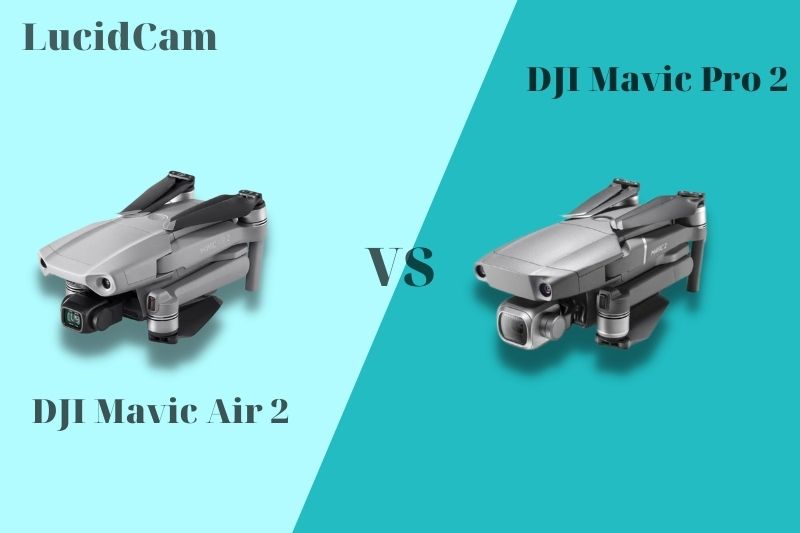The DJI Mavic Air 2 vs Pro 2 are both powerful drones that offer the latest in drone technology. Both of these drones have some similarities but also many differences as well. The main difference between these two drones is their size; one is bigger than the other.
The following article will compare and contrast them to help you decide which best drone for your needs.
Table of Contents
- 1 DJI Mavic Air 2 vs Pro 2
- 1.1 Which Drone Is Best For You?
- 1.2 Key Specifications
- 1.3 DJI Mavic Air 2 vs Pro 2- Design
- 1.4 Specifications and Features
- 1.5 Flight Performance
- 1.6 Intelligent Flight Modes
- 1.7 Pro 2 vs DJI Mavic Air 2- Image and video
- 1.8 Camera Performance
- 1.9 Aircraft
- 1.10 3D Sensing Program
- 1.11 Gimbal and Rest Controller
- 2 Verdict
- 3 Conclusion
DJI Mavic Air 2 vs Pro 2

Which Drone Is Best For You?
It is just as important to choose the right drone for you as choosing the right land-based camera. The DJI Mavic Air 2 and DJI Mavic Air2 Pro are great options for those looking to buy their first drone or add a new model.
How do you choose a winner in this great Air 2 vs. Mavic Pro debate? It’s worth taking a look at the details of each drone.
The DJI Mavic2 Pro, which was launched in mid-2018, is the flagship model of DJI’s consumer drone range. Although It isn’t as advanced as the Inspire 2 and Matrice models, which are professional drones used in the film industry, Mavic2 Pro can be used by professionals.
Mavic2 Pro features a 1inch sensor, Hasselblad camera, variable aperture, and the ability to capture both raw stills and video. Basic Mavic 2 Pro Kit costs $1,599/PS1,349/$2,499. If you’re looking for the impressive control offered by the Hasselblad camera with variable aperture, then Mavic 2 Pro is the best option for you.
The DJI Mavic Air2 was released in 2020. It features new technology, such as slow-motion video at 240fps, precise obstacle avoidance sensors, and longer flight duration. For drone pilots looking for a high-end device at an affordable price, the Air 2 is a perfect drone. The Air 2 works well with other DJI drones due to its portability and extensive features.
The Mavic Air 2’s 1/2-inch 12MP sensor is smaller than its sibling. However, Mavic 2 Pro’s top speed and wind resistance are almost identical, demonstrating how far DJI has come in such a short time. The basic Air 2 kit costs $799 / PS769 / AU$1,499.
This is a simple comparison of the drones’ relative strengths. But what about the important smaller differences? This is our DJI Mavic Air 2 and Mavic 2 Pro comparison. We compare their designs, specifications, performance, high image quality, and controllers.
Key Specifications
[amazon table=”2801″]DJI Mavic Air 2 vs Pro 2- Design
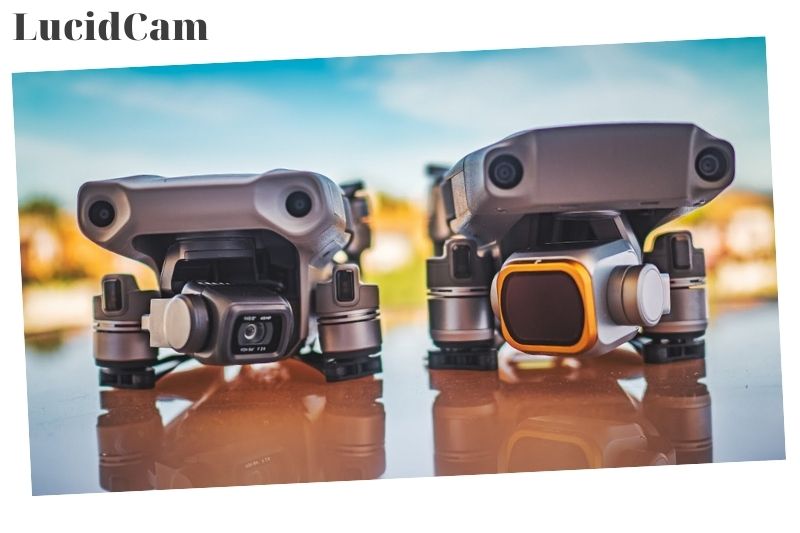
- Both drones share the same folding design, and they look almost identical
- Although Mavic 2 Pro is more powerful, it’s still very portable.
- Mavic Air 2 now has a larger controller
When it comes to design, both the DJI Mavic Air 2 and Mavic 2 Pro are well-crafted and visually appealing drones. The Air 2 is a continuation of the design of the original DJI Mavic Air and features the same folding design as its predecessor. However, the Air 2 has a significantly improved build quality, which gives it a more premium feel.
In terms of size and weight, the Mavic Air 2 is the more portable and compact of the two drones. It weighs in at 570g, which is significantly lighter than the Mavic 2 Pro, which weighs 907g.
Although this may not seem like a significant weight difference, it can make a big difference for outdoor photographers and videographers who need to carry the drone around for extended periods of time. The weight savings continue to grow when you add the battery weights, with the Mavic Air 2’s battery weighing in at 198g and the Mavic 2 Pro’s battery weighing 297g.
The controller design is another area where the two drones differ. The Air 2 controller has moved away from its folding design and instead features a sleeker and more modern look.
The controller does not have an LCD screen that displays additional information about the drone, flight, and camera, which is a feature that is present on the Mavic 2 Pro controller. However, the new Air 2 controller design is larger and has a longer battery life, which allows for more extended flights than the Mavic 2 Pro controller.
It is surprising that DJI abandoned the folding controller design in terms of weight and size when the Air 2 is so small and compact. However, the new controller design is sleek and modern, with a larger size that makes it more comfortable to hold during long flights.
Additionally, the Mavic 2 Pro’s larger size and weight do provide some advantages, such as better wind resistance and stability in flight.
Specifications and Features
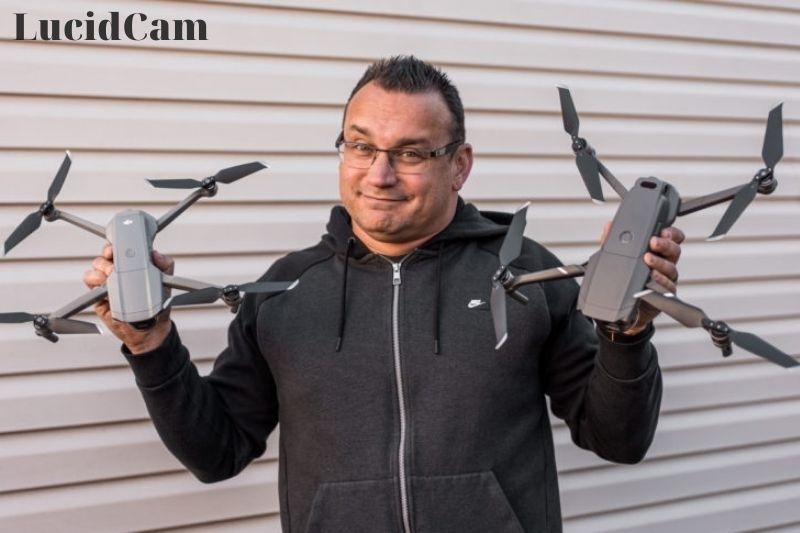
- Mavic Air2 can shoot slo-mo videos up to 1080/240p or 4K/60p
- The Mavic 2 Pro can shoot up to 1080/120p or 4K/30p.
- Mavic Air2 can also record hyper-lapse of up to 8K
When it comes to specifications and features, the DJI Mavic Air 2 and Pro 2 have some notable differences that may affect your buying decision. While the Mavic 2 Pro has better image quality, the Air 2 offers higher frame rates for slow-motion and 4K video. The Air 2 also has improved follow/tracking and hyper-lapse capabilities up to 8K, providing some future-proofing for those who want to invest in cutting-edge technology.
The cameras on the two drones differ significantly. The Mavic 2 Pro features a 1-inch 20MP sensor with a 28mm equivalent focal length camera, while the Mavic Air 2 has a 1/2-inch 12MP sensor with a focal length of 24mm. The difference in sensor size is most noticeable when shooting stills, but it also affects the size and weight of the drones.
At a software level, the cameras are similar, but the Mavic 2 Pro offers some additional functionality with an adjustable aperture, autofocus, and hyperfocal focus. In contrast, the Mavic Air 2 uses a fixed aperture at f/2.8 and hyperfocal.
Both drones have similar intelligent flight modes, but the Air 2 has some improvements in follow/tracking and hyper-lapse capture. The Mavic 2 Pro, on the other hand, has a slightly longer battery life and a more advanced obstacle avoidance system.
Flight Performance
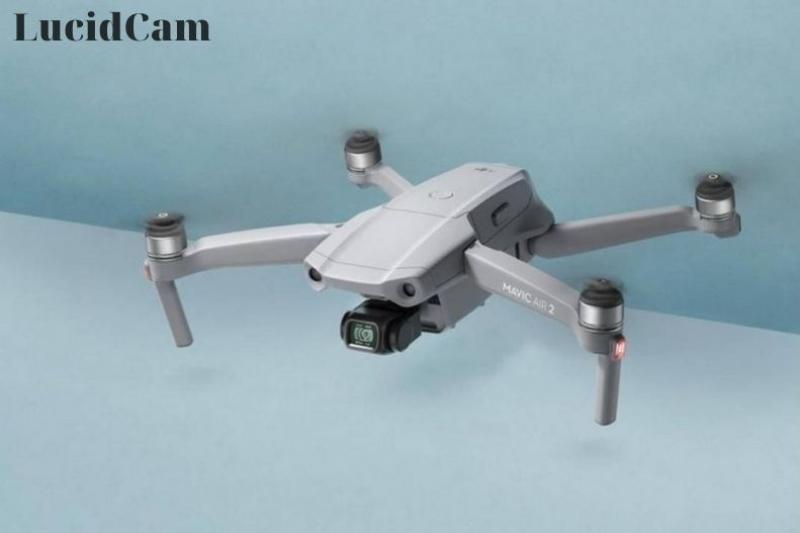
- Both drones are equipped with GPS and GLONASS satellite systems.
- Mavic Air 2 has a slightly longer battery lifespan
- Mavic 2 Pro has more obstacle avoidance sensors
When it comes to flight performance, both the DJI Mavic Air 2 and Mavic 2 Pro offer impressive capabilities, with only a few differences between them. Both drones have GPS and GLONASS satellite systems, which provide accurate positioning and movement tracking, making them easy to control and fly.
In terms of speed, both drones can reach similar speeds and offer similar levels of wind resistance. However, the Mavic 2 Pro feels and looks more stable in the air than the Air 2, which can be attributed to the larger propellers on the Pro model.
The folding propellers on both drones are designed to be low-noise, which is an added bonus when flying in public areas or near wildlife.
Both drones also feature obstacle avoidance sensors, with the Air 2 having more precise sensors for forward, backward, and downward avoidance. However, the Mavic 2 Pro has the added benefit of side and upwards sensors, which can be useful in challenging flying conditions, such as flying near trees or buildings.
One of the most significant differences between the two drones in terms of flight performance is battery life. The Mavic Air 2 offers the longest battery life, despite having smaller and lighter batteries, thanks to advancements in battery technology.
The maximum flight time advertised for the Air 2 is 34 minutes with no wind, while the Mavic 2 Pro offers a maximum flight time of 31 minutes at 25kph without wind. However, it’s essential to keep in mind that real-life flying conditions, such as wind and temperature, can affect the drone’s flight time.
Overall, both the DJI Mavic Air 2 and Mavic 2 Pro offer exceptional flight performance, making them suitable for a wide range of aerial photography and videography tasks. However, the Mavic 2 Pro’s stability and additional obstacle avoidance sensors, combined with the Air 2’s longer battery life, make each drone ideal for different use cases.
Video Transmission
Intelligent Flight Modes
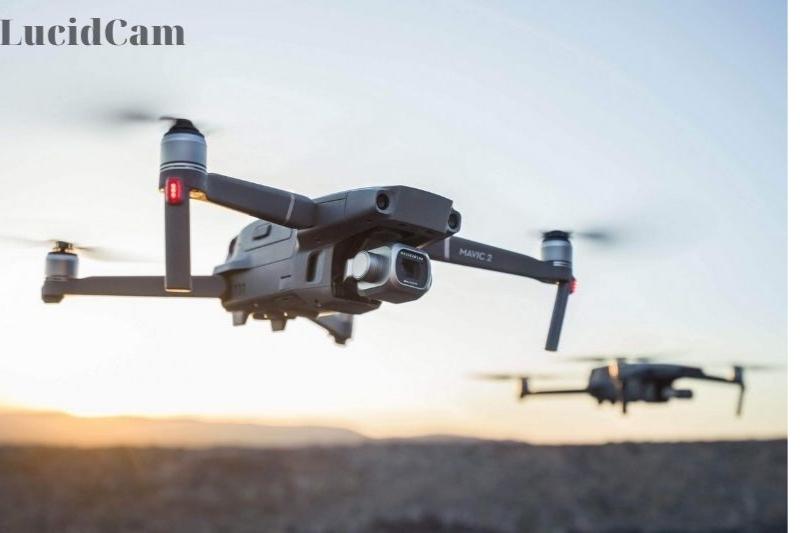
The DJI Mavic Air 2 and the Mavic 2 Pro both offer a range of intelligent flight modes to make flying and capturing footage easier and more efficient. The Mavic Air 2 comes with the same five QuickShot modes as the Mavic Mini 2, as well as a sixth Asteroid Mode.
Additionally, it features ActiveTrack 3.0, Point of Interest mode, and Spotlight 2.0, which allow the user to lock the camera onto a subject while in flight. The Hyperlapse mode is another notable feature of the Air 2, allowing users to create complex shots without the need for post-processing.
On the other hand, the Mavic 2 Pro offers a simple and enjoyable flying experience with onboard GPS and three flight modes. It features OcuSync 2.0 technology that can track your flight up to 10 km away, accessible by clipping your phone into the remote control.
Both the Mavic 2 Pro and Air 2 support six QuickShot modes and Point of Interest (hyperlapse), and ActiveTrack 2.0 is available on both models. However, the Air 2 has a more advanced ActiveTrack 3.0 and includes Waypoints and Tripod Mode thanks to the TapFly feature.
In summary, while both drones offer intelligent flight modes, the DJI Mavic Air 2 has a more advanced ActiveTrack 3.0, Waypoints, and Tripod Mode features, making it a more efficient and versatile tool for aerial photography and videography. The Mavic 2 Pro, on the other hand, offers reliable flight performance and OcuSync 2.0 technology for longer-range flights.
Pro 2 vs DJI Mavic Air 2- Image and video
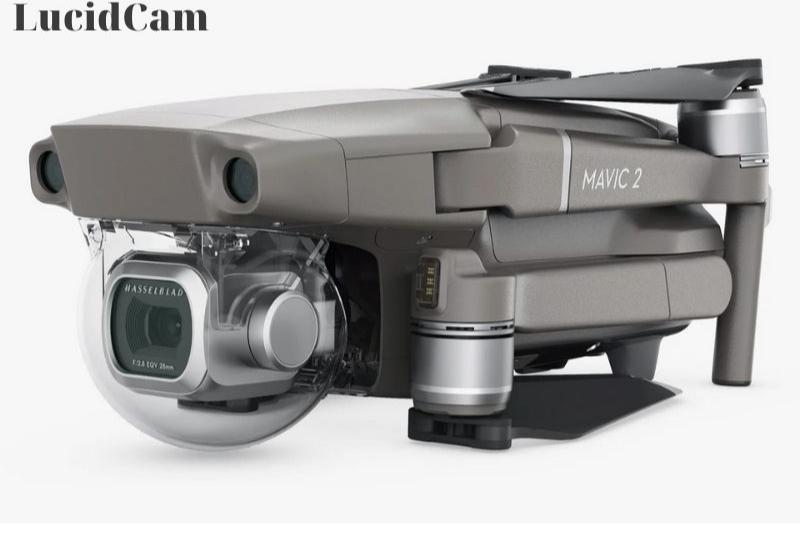
- Both drones offer record flat video for professional workflows
- The Air 2 represents a significant upgrade to its Mavic Air predecessor
- The Mavic 2 Pro, however, produces higher quality stills and video overall.
When it comes to image and video quality, the DJI Mavic 2 Pro and the DJI Mavic Air 2 have some notable differences. The Mavic 2 Pro is equipped with a 1-inch CMOS sensor that offers a higher resolution and better low-light performance than the Air 2.
It has a maximum resolution of 20 megapixels and can shoot 4K video at up to 60 frames per second, making it ideal for professional photographers and videographers.
On the other hand, the Mavic Air 2 features a smaller 1/2-inch sensor with a maximum resolution of 12 megapixels. While it is still capable of capturing stunning images and video, its image quality is not quite as good as the Mavic 2 Pro’s. The Air 2 can shoot 4K video at up to 60 frames per second, just like the Mavic 2 Pro.
Another difference between the two drones is the bit rate of their video. The Mavic 2 Pro can shoot at a maximum bit rate of 100Mbps, while the Air 2 can only shoot at a maximum bit rate of 68Mbps. This means that the Mavic 2 Pro is capable of capturing more detail and producing higher quality footage.
In terms of color profiles, the Mavic 2 Pro offers a Dlog-M color profile, which is ideal for professional color grading. It also offers a 10-bit HDR mode, which allows for greater dynamic range in your footage. The Air 2 offers a similar color profile, but it is not quite as advanced as the one on the Mavic 2 Pro.
Overall, while both drones are capable of capturing high-quality images and video, the Mavic 2 Pro offers better performance in low light and a higher bit rate, making it the better choice for professionals who demand the highest quality footage.
However, for most hobbyists and enthusiasts, the Mavic Air 2 will be more than sufficient and offers excellent value for its price.
Camera Performance

Both the DJI Mavic 2 Pro and the DJI Mavic Air 2 are equipped with impressive cameras that cater to the needs of content creators. However, there are some notable differences in camera performance between the two drones.
The Mavic 2 Pro features a 1-inch 20MP sensor, which is larger than the 1/2-inch sensor found on the Mavic Air 2. This larger sensor allows the Mavic 2 Pro to capture more detail and achieve a greater dynamic range, resulting in better color accuracy and less noise in low-light situations.
Additionally, the Mavic 2 Pro can record video at 10-bit, which provides more control over post-processing and allows for the removal of shadows and brightness without adding more noise.
On the other hand, the Mavic Air 2 offers some advantages in camera performance as well. It can record 4K video at 60FPS, compared to the Mavic 2 Pro’s 4K@30FPS, and can record at 120Mbps, which packs more detail.
The Mavic Air 2’s 48MP 1/2″ sensor almost doubles the still image resolution, at 8000x6000px, compared to the 5472x3648px on the Mavic 2 Pro. This allows for more flexibility in post-processing and the ability to crop images without losing quality.
In terms of gimbal technology, both drones feature 3-axis gimbals that ensure smooth footage in a variety of situations. However, the Mavic 2 Pro’s gimbal technology is more advanced and offers greater stabilization, which is important for capturing professional-grade footage.
Ultimately, the choice between the DJI Mavic 2 Pro and the DJI Mavic Air 2 comes down to individual needs and preferences. If you prioritize a larger sensor and greater dynamic range for better color accuracy and less noise in low-light situations, the Mavic 2 Pro is the better option.
However, if you prioritize higher-resolution still images and the ability to record 4K video at 60FPS, the Mavic Air 2 may be the better choice.
Aircraft

The DJI Mavic Air 2 and Mavic 2 Pro are two of the most popular drones on the market. They both have similar construction, but differ in weight, with the Mavic Air 2 weighing in at just 570g, making it more portable for those who plan on carrying it around frequently.
On the other hand, the Mavic 2 Pro is slightly heavier at 907g. Both drones offer excellent flight capabilities, with the Mavic Air 2 having a longer flight time of 34 minutes, while the Mavic 2 Pro has a flight time of 31 minutes.
The Mavic Air 2 also has a slightly longer maximum distance it can fly, at 18.5Km compared to the Mavic 2 Pro’s 18.4Km, but the Mavic 2 Pro wins on maximum flight speed at 72Km/h, compared to the Air’s 68.5Km/h.
When it comes to storage, both drones have the same internal storage of 8GB, as well as a maximum SD card capacity of 256GB. However, the Mavic 2 Pro does have an advantage in terms of its camera, with a larger image sensor that allows it to capture more detailed and higher-quality images and videos.
The Mavic 2 Pro also has an adjustable aperture, allowing for more control over the depth of field, and a higher ISO range, making it better suited for low-light photography.
In summary, both drones have their strengths and weaknesses, but the Mavic Air 2 may be the better choice for those who prioritize portability and longer flight time, while the Mavic 2 Pro may be more suitable for those who prioritize image and video quality. Ultimately, the choice between the two will depend on your specific needs and preferences.
3D Sensing Program
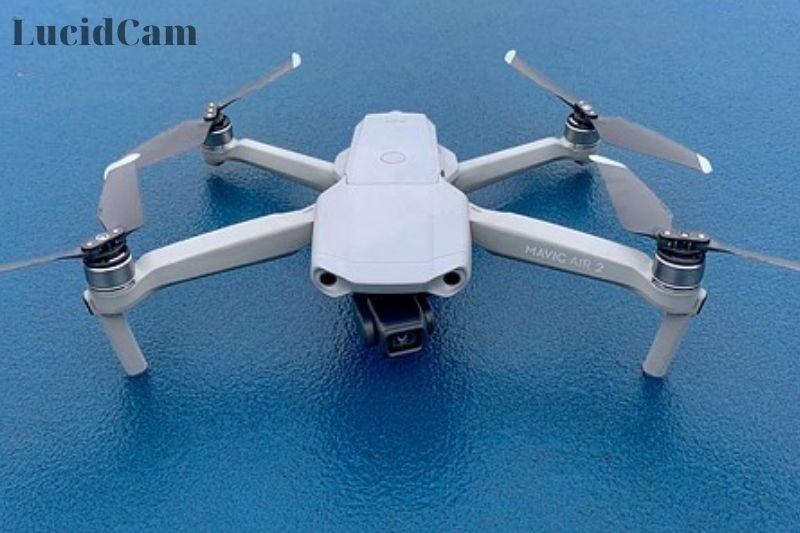
One of the key differences between the DJI Mavic Air 2 and the Mavic 2 Pro is the 3D Sensing Program. The Mavic Air 2 features Advanced Pilot Assistance System 3.0 (APAS 3.0), which uses 3D sensing technology to detect obstacles in its flight path and automatically navigate around them.
This feature ensures that the drone avoids collisions, making it safer and more convenient to fly. APAS 3.0 also allows the Mavic Air 2 to fly smoothly and steadily even in complex environments, such as indoor spaces or narrow gaps between obstacles.
On the other hand, the Mavic 2 Pro features a 3D sensing system that includes obstacle avoidance sensors on all sides of the drone, making it even more capable of avoiding obstacles during flight. This system allows the drone to sense and avoid objects up to 20 meters away, giving it a wider range of obstacle avoidance capabilities than the Mavic Air 2.
Both drones also have other intelligent flight features that use the 3D sensing technology. For example, the Mavic Air 2 has ActiveTrack 3.0, which allows the drone to automatically follow and track a subject while avoiding obstacles in its path.
It also has SmartPhoto, which uses scene recognition and advanced machine learning algorithms to automatically capture stunning images with improved image quality.
The Mavic 2 Pro also features similar intelligent flight modes such as ActiveTrack 2.0 and Point of Interest. In addition, it has a new Hyperlapse feature, which allows users to create stunning time-lapse videos with a simple tap of a button.
The drone can fly along a predefined path while automatically capturing images and stitching them together to create a seamless, professional-looking video.
Gimbal and Rest Controller
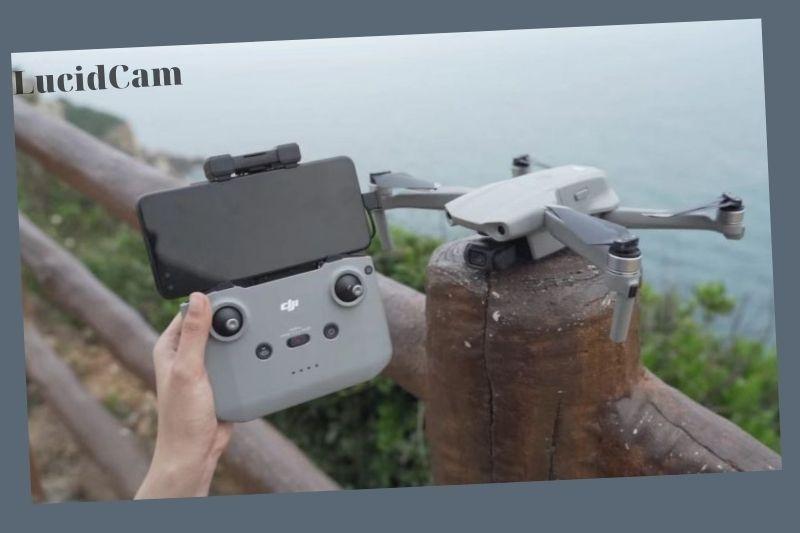
When it comes to the gimbal and remote controller, both the DJI Mavic Air 2 and the Mavic 2 Pro have their strengths and weaknesses. The Mavic Air 2 features a 3-axis gimbal, which is excellent for keeping the camera steady during flight.
It also features a compact remote controller that is easy to hold and operate. The remote controller has a built-in screen that displays all the essential flight information, and it also has customizable buttons for quick access to frequently used features. The remote controller for the Mavic Air 2 has a maximum range of 10km.
The Mavic 2 Pro, on the other hand, features a 3-axis gimbal with a Hasselblad camera. The camera has a 1-inch CMOS sensor and can capture 4K video at up to 60fps. The gimbal is highly stable, and the camera is excellent for capturing high-quality aerial footage.
The remote controller for the Mavic 2 Pro is larger than the one for the Mavic Air 2, but it is still comfortable to hold and operate. It features a built-in screen that displays all the essential flight information, and it also has customizable buttons for quick access to frequently used features. The remote controller for the Mavic 2 Pro has a maximum range of 8km.
Overall, both drones have excellent gimbals and remote controllers that are easy to use and highly functional. The Mavic 2 Pro has the advantage of a higher-quality camera, but the Mavic Air 2 has a longer range for its remote controller. Ultimately, the choice between the two drones will depend on the specific needs of the user and the type of aerial footage they are looking to capture.
Verdict

Although these drones are very similar in design and specs, there is a lot to be said about their appeal to different drone pilots, videographers, and photographers. They aren’t objectively superior, but they are different.
The Mavic 2 Pro is a superior drone in terms of image and video quality as well as flexibility, thanks to its adjustable aperture. It is the ideal drone for professional drone users. The Mavic Air’s 1/2-inch sensor is smaller than the Mavic Air’s 1inch sensor. This makes still images in Raw and JPEG larger.
Air 2 has the 48MP mode, which allows you to create higher-resolution JPEGs. This was a major feature at launch. However, this mode requires in-camera interpolation, which results in less sharp images and muddy colors than when shooting in Raw. Photoshop can be used to produce better results by manually interpolating Raw files after processing.
Although this might seem like a negative review of the Mavic Air 2’s image quality, the drone can still produce excellent stills and video alongside their standard ground-based work. It is also lighter and smaller than the Mavic Pro 2. While the Mavic Pro 2 is still very portable, the Mavic Air 2 beats it in this regard.
The Air 2 is the ideal choice for videographers and photographers who need to take aerial stills and videos in addition to their regular ground-based work. Hobbyists looking for lightweight options for long trips will also love the Air 2.
The Air 2 is professional-friendly despite its name. It has a 120Mbps video bitrate, compared to 100Mbps. Also, it has higher frame rates for HD and UHD videos.
Budget is always a factor in your decision-making process. The basic Air 2 kit is also significantly cheaper, costing $799 / £769 / AU$1,499 whereas the Mavic 2 Pro costs $1,599 / PlayStation1,349 / $24,499, making it more attractive financially, and perhaps offers the best value too
Conclusion
Lucidcam hopes you find this article helpful in your decision to purchase either the Air 2 or the DJI Mavic Pro 2. The choice is yours! If you want the best camera and flight capabilities that money can offer, you can’t do better than the DJI Mavic 2 Pro.
However, we can confidently say that both drones are excellent options for anyone looking to buy a drone. Remember, when it comes to buying tech, not all price points are created equal, so if you want something high quality and affordable, then these two drones should be at the top of your list.
Let us know what product you end up choosing by leaving a comment below!
Read More:
- Skydio 2 vs Mavic Air 2: Which Is Better For You 2023
- DJI Mavic Air 2 vs Pro 2: Which Is Better For You 2023
- Mavic Air Vs Mavic Pro Platinum 2023: Which Is Better For You?
